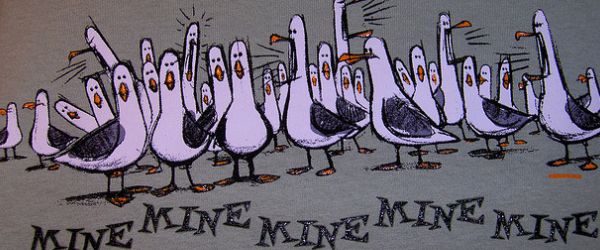How do you measure how good you are as a scientist? How would you compare the impact of two scientists in a field? What if you had to decide which one would get a grant? One method is the h-index, which we will discuss in more detail below. First, we’ll touch on why this is not a simple task.
Measuring scientific performance is more complicated and more critical than it might first seem. Various methods for measurement and comparison have been proposed, but none of them is perfect.
At first, you might think that the method for measuring scientific performance doesn’t concern you—because all you care about is doing the best research you can. However, you should care because these metrics are increasingly used by funding bodies and employers to allocate grants and jobs. So, your perceived scientific performance score could seriously affect your career.
Metrics for Measuring Scientific Performance
What are the metrics involved in measuring scientific performance? The methods that might first spring to mind are:
- Recommendations from peers. At first glance, this is a good idea in principle. However, it is subject to human nature, so personal relationships will inevitably affect perceived performance. Also, if a lesser-known scientist publishes a ground-breaking paper, they would likely get less recognition than if a more eminent colleague published the same paper.
- The number of articles published. A long publication list looks good on your CV, but the number of articles published does not indicate their impact on the field. Having a few publications well-heeded by colleagues in the field (i.e., they are cited often) is better than having a long list of publications cited poorly or not at all.
- The average number of citations per article published. So, if it’s citations we’re interested in, then surely the average number of citations per paper is a better number to look at. Well, not really. The average could be skewed dramatically by one highly cited article, so it does not allow a good comparison of overall performance.
The H-Index
In 2005, Jorge E. Hirsch of UCSD published a paper in PNAS in which he put forward the h-index as a metric for measuring and comparing the overall scientific productivity of individual scientists. [1]
The h-index has been quickly adopted as the metric of choice for many committees and bodies.
How to Calculate An Author’s H-Index
The h-index calculation is pretty simple. You plot the number of papers versus the number of citations you (or someone else) have received, and the h-index is the number of papers at which the 45-degree line (citations=papers, orange) intercepts the curve, as shown in Figure 1. That is, h equals the number of papers that have received at least h citations. For example, do you have one publication that has been cited at least once? If the answer is yes, then you can go on to your next publication. Have your two publications each been cited at least twice? If yes, then your h-index is at least 2. You can keep going until you get to a “no.”

So, if you have an h-index of 20, you have 20 papers with at least 20 citations. It also means that you are doing pretty well with your science!
What is a Good H-Index?
Hirsch reckons that after 20 years of research, an h-index of 20 is good, 40 is outstanding, and 60 is truly exceptional.
In his paper, Hirsch shows that successful scientists do, indeed, have high h-indices: 84% of Nobel Prize winners in physics, for example, had an h-index of at least 30. Table 1 lists some eminent scientists and their respective h-indexes.
Table 1: H-index scores of some Nobel Laureates (data from Google Scholar collected on September 27, 2023).
Nobel Laureate | H-index |
Jennifer Doudna | 147 |
Shinya Yamanaka | 125 |
James Rothman | 138 |
Carolyn Bertozzi | 142 |
Frances H. Arnold | 142 |
Joachim Frank | 117 |
Stefan W. Hell | 143 |
Gregory P. Winter | 103 |
Robert J. Lefkowitz | 252 |
Advantages of the H-Index
The advantage of the h-index is that it combines productivity (i.e., number of papers produced) and impact (number of citations) in a single number. So, both productivity and impact are required for a high h-index; neither a few highly cited papers nor a long list of papers with only a handful of (or no!) citations will yield a high h-index.
Limitations of the H-Index
Although having a single number that measures scientific performance is attractive, the h-index is only a rough indicator of scientific performance and should only be considered as such.
Limitations of the h-index include the following:
- It does not take into account the number of authors on a paper. A scientist who is the sole author of a paper with 100 citations should get more credit than one on a similarly cited paper with 10 co-authors.
- It penalizes early-career scientists. Outstanding scientists with only a few publications cannot have a high h-index, even if all of those publications are ground-breaking and highly cited. For example, Albert Einstein would have had an h-index of only 4 or 5 if he had died in early 1906 despite being widely known as an influential physicist at the time.
- Review articles have a greater impact on the h-index than original papers since they are generally cited more often.
- The use of the h-index has now broadened beyond science. However, it’s difficult to compare fields and scientific disciplines directly, so, really, a ‘good’ h-index is impossible to define.
Calculating the H-Index
There are several online resources and h-index calculators for obtaining a scientist’s h-index. The most established are ISI Web of Knowledge, and Scopus, both of which require a subscription (probably via your institution), but there are free options too, one of which is Publish or Perish.
You might get a different value if you check your own (or someone else’s) h-index with each of these resources. Each uses a different database to count the total publications and citations. ISI and Scopus use their own databases, and Publish or Perish uses Google Scholar. Each database has different coverage and will provide varying h-index values. For example, ISI has good coverage of journal publications but poor coverage of conferences, while Scopus covers conferences better but needs better journal coverage pre-1992. [2]
Is the H-index Still Effective?
A paper published in PLoS One in 2021 concluded that while a scientist’s h-index previously correlated well with the number of scientific awards, this is no longer the case. This lack of correlation is partly because of the change in authorship patterns, with the average number of authors per paper increasing. [3]
Are Alternatives to the H-Index Better?
Let’s take a look at some of the alternative measures available.
The H-Frac Index
The authors of the PLoS One paper suggest fractional analogs of the h-index are better suited for the job. [3] Here, the number of authors on a paper is also considered. One such measure is the h-frac, where citation counts are divided by the number of authors. However, this solution could also be manipulated to the detriment of more junior researchers, as minimizing the number of authors on a paper would maximize your h-frac score. This could mean more junior researchers are left off papers where they did contribute, harming their careers.
The G-Index
This measure looks at the most highly cited articles of an author and is defined as “the largest number n of highly cited articles for which the average number of citations is at least n.” [4] This measure allows highly cited papers to bolster lower cited papers of an author.
The i-10 Index
Developed by Google Scholar, this index is the number of articles published by an author that have received at least 10 citations. This measure, along with the h-index, is available on Google Scholar.
M-Value
The m-value was developed to try to balance the scales for early career researchers. It corrects the h-index for time, allowing for easier comparison of researchers with different seniority and career lengths. It is calculated as the h-index divided by the number of years.
The Problem with Measuring Performance
While these numbers can be helpful to give a flavor of a scientist’s performance, they are all flawed. Many are biased towards researchers who publish often and are further into their careers. Many of these indexes can also be manipulated, such as adding extra authors to papers who didn’t contribute.
In reality, it isn’t possible to distill a researcher’s contributions to a single number. They may not have published many papers, but those papers they have published made vital contributions. Or their skills are in training the next round of researchers. When looking at these numbers, we should remember they are just a reflection of one small part of a researcher’s contributions and values and are not the be-all and end-all.
The H-Index Summed Up
The h-index provides a useful metric for scientific performance, but only when viewed in the context of other factors. While other measures are available, including the i-10 index, the G-index, and the h-frac index, these also have limitations. Therefore, when making decisions that are important to you (funding, job, finding a PI), be sure to read through publication lists, talk to other scientists (and students) and peers, and take account of career stage. So, remember that an h-index is only one consideration among many—and you should definitely know your h-index—but it doesn’t define you (or anyone else) as a scientist.
References
- Hirsch JE. (2005) An index to quantify an individual’s scientific research output. PNAS 102(46):16569–72
- Meho LI, Yang K. (2007) Impact of data sources on citation counts and rankings of LIS faculty: Web of science versus scopus and google scholar. JASIST 58(13):2105–25
- Koltun V, Hafner D. (2021) The h-index is no longer an effective correlate of scientific reputation. PLoS One. 16(6):e0253397
- Wikipedia. g-index. Accessed 25 September 2023
Originally published April 2, 2009. Reviewed and updated October 2023.




